Have you ever thought that shoelaces could be a subject of debate? Flat laces or round laces – no matter how trivial, they are an important factor in determining the fate of a shoe, including feel, comfort, and style.
But which will win out? Which laces are best for which shoes? To find out, you must first understand the pros and cons of each. Stay tuned to find out which lace is right for you.
 Flat Cord vs. Round Cord
Flat Cord vs. Round Cord
Round cords come in a wide variety of colors and are easier to tie than flat cords. They are also easier to secure and save you the trouble of re-knotting. However, they are bulky, which some people dislike. On the other hand, flat cords are versatile and the best choice for those who want sturdy shoes. Their stability and support make them ideal for running, walking, and hiking.
Flat straps are also a good choice for people who do a lot of walking or standing during the day. However, both have their advantages and disadvantages, and each is popular in its own right. Let’s review the main differences between these two types of shoes.
Also Read: Best Shoes For Security Guards
What Are The Main Differences Between Flat Cords And Round Cords?
Round laces are easier to obtain and come in a wide variety of colors. However, they are a bit bulkier and tend to fray more easily.
- Round cords are the most common and are the standard cord that comes with most shoes. They are considered traditional and versatile, while flat cords are considered modern and unique.
- In addition, flat cords are flexible and easy to tie, while round cords are said to be stronger and easier to tie.
- Flat cords are also becoming increasingly popular, especially among sports shoe enthusiasts and those who want to personalize their shoes.
- Flat cords are thinner and less noticeable than round ones. They are also less likely to fray. However, they are a little harder to find and come in fewer color variations.
Also Read: Best Shoes For Disney World (Disneyland)
Which Is Better, Flat Cord Or Round Cord?
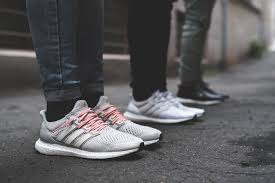
Round laces are more traditional, and many people find them to be more grippy than flat laces. They are also less likely to tangle than flat laces. For traditional leather-tongue loafers, round shoelaces are the best choice. They have a specific curvature. This curvature allows them to follow the shape of the foot as they act like a spring and are generally more comfortable.
However, flat laces are becoming increasingly popular because of their many advantages. They are easy to install, look nicer than round laces, and are harder to untie. Compared to round laces, flat laces are more suitable for sports shoes and generally when shoes need to be secured. They are also useful when you want to play with your shoes, as you can completely change the look of your shoes just by changing the laces.
What is comfortable and easy to use is up to you, if you ask us. You can choose whichever you prefer.
Also Read: Best Shoes For Heel Pain
Advantages And Disadvantages Of Flat Cords
To determine which one is suitable or not, you need to know the advantages and disadvantages of the moon. So here are the advantages and disadvantages of flat cords.
Advantages
- Easy to tie
- Hard to break
- Suitable for all types of shoes
Disadvantages
- Knots do not hold well
- Easily undone in most cases
- Wears out quickly.
Also Read: Best Shoes For Dancing
Advantages And Disadvantages Of Round Shoelaces
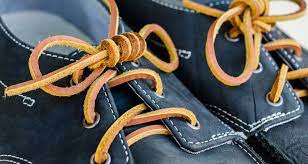
Advantages
- Round laces are often more durable
- It is harder to untie
- They are considerably stronger
- They are more aesthetically pleasing
- Variety of colors and sizes
Disadvantages
- Less durable and can be difficult to keep tied
- Flat or round cord, which is better?
- There are different opinions on whether to use flat or round cords. Some believe that it does not matter and that either type of lace can be used between the two.
Others think that putting a flat cord between two round cords prevents the round cord from shifting. Another opinion is that putting a round cord between two flat cords prevents the flat cord from shifting.
Also Read: How To Choose The Right Shoes
How Do You Tie The Shoelaces For Both Types Of Laces?
There are two types of shoe-tying methods: the “rabbit-ear” method and the “buckle” method. Both methods are effective, but each has different advantages.
Rabbit-Ear Method
This is the traditional way of tying shoes. Make a loop with one shoelace and cross the other shoelace over the loop. Next, take the end of the second lace and pull it over the first lace. Finally, tuck the end of the second lace under the first lace.
The rabbit-ear method is the most common way to tie shoes. It is more complicated than the buckling 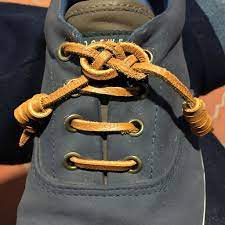
Buckle Method
This is a newer method that makes tying shoes faster and easier. It is not as secure as the rabbit-ear method, but it is easier and less time-consuming.
This method involves making a loop with one shoelace and threading the other shoelace through the loop. Tighten both laces and tie a knot. This method is ideal for runners or anyone who wants to save time tying shoelaces.
Also Read: Best Shoes For Elderly Women
Why Are Shoelaces For Running Shoes Traditional Flat Laces?
The main reason is comfort. Flat laces naturally follow the natural curves of the foot, allowing the foot to move naturally and provide stability.
On the other hand, round laces, which are often found in skateboard shoes, have a different feeling of pressure on the foot. Flat cords provide stability by moving with the foot.
Flat laces are ideal for running shoes because they do not untie. This may not sound like a big deal, but trying to run a 10 km race hard with shoelaces that bob up and down can be frustrating.
They are easy to use and can be tied without any special skills or knowledge. What’s more, they are adjustable, so you can tighten or loosen them to your liking. You can leave it in place. It will not come off while you are running.
Finally, they are affordable; you can buy a pack of 100 for a few dollars.
How Do You Keep Your Shoelaces From Coming Undone?
Let’s start with the basics. When tying your shoelaces, make sure that the ends of the laces are not visible. If you do, the laces may come undone as you walk or run. This can be avoided by tying a double knot.
There are several ways to solve this problem.
- The first is to tie the shoelaces correctly. If shoelaces are tied incorrectly, the laces can easily come undone. Try tying the shoelace once by stabbing it with a tongue.
- Second, pay attention to the length of the shoelace. When tying shoelaces, are the laces too long?
- Finally, laces should be tied with a double knot or double loop, not a single knot or single loop. Using a single loop or knot to tie shoelaces may result in having to tie them multiple times during the course of a day.
 Combination Of Flat And Round Laces
Combination Of Flat And Round Laces
Both flat and round laces have advantages and disadvantages. Flat shoelaces are easier to tie and maintain a knot, while round shoelaces are more comfortable. Some people also find that round shoelaces make their shoes look better.
If you want the best of both worlds, you can purchase a combination of flat and round laces. These laces have a flat part and a round part, which can be used differently depending on the shoe. This gives you the convenience of a flat cord when you need it and the comfort of a round cord when you don’t.
Flat Shoelaces vs Round Shoelaces: A Definitive Comparison | Video Explanation
Why do Running Shoes Have Flat Laces?
Running shoes often have flat laces because they provide a better, more secure fit than round laces. Flat laces have a larger surface area that comes into contact with the eyelets of the shoe, which creates more friction and prevents the laces from slipping or coming undone during exercise.
Additionally, flat laces are less likely to become tangled or twisted during physical activity. This is important for runners, as it can be distracting and time-consuming to stop and untangle laces during a run.
Lastly, flat laces can be adjusted more precisely than round laces, allowing runners to customize the fit of their shoes to their individual preferences. They can be tightened or loosened to provide the desired level of support and comfort, which is crucial for preventing blisters and other foot injuries during exercise.
Overall, the design of flat laces in running shoes prioritizes functionality and performance, ensuring that runners can focus on their workout without being distracted by uncomfortable or unstable footwear.
Do Flat Laces Stay Tied Better Than Round Laces?
Yes, flat laces typically stay tied better than round laces. This is because flat laces have a larger surface area that comes into contact with the eyelets of the shoe, which creates more friction and prevents the laces from slipping or coming undone during physical activity. The flat shape of the laces also helps to distribute pressure evenly across the lace, reducing the likelihood of the knot loosening.
In contrast, round laces have a smaller surface area and can easily slide through the eyelets, which can cause the knot to come undone or become loose during exercise. This can be particularly problematic for athletes who require a secure and stable fit in their footwear to prevent injury and maximize performance.
Overall, while both flat and round laces have their own unique benefits and drawbacks, flat laces are generally considered to be a more reliable option when it comes to staying tied during physical activity.
Round or Flat Laces for Hiking Boots?
When it comes to hiking boots, both round and flat laces can work well depending on personal preference and the specific design of the boots.
Flat laces tend to be a popular choice for hiking boots as they offer more surface area to grip the eyelets, which can create a more secure and stable fit. Additionally, flat laces are less likely to become tangled or twisted during hikes, which can be a frustrating distraction.
On the other hand, some hikers prefer round laces for their durability and ability to stay tied for longer periods. Round laces are also more forgiving when it comes to stretching and expanding, which can be beneficial for hikers with wider feet or those who require a more adjustable fit.
Ultimately, the choice between round and flat laces for hiking boots comes down to personal preference and the specific needs of the hiker. Some hikers may prefer the added security and stability of flat laces, while others may prioritize the durability and adjustability of round laces.
Why Dress Shoes Have Round Laces?
Dress shoes often have round laces because they are considered to be more aesthetically pleasing and formal compared to flat laces. The round shape of the laces gives a sleek and elegant appearance that complements the sophistication of dress shoes.
In addition to their visual appeal, round laces are also easier to tie and untie compared to flat laces, which can be helpful when getting dressed in a hurry. They tend to slide through the eyelets smoothly, making them easier to adjust to achieve the desired level of tightness.
Furthermore, round laces tend to be more durable than flat laces, as they are less likely to fray or become worn down over time. This is important for dress shoes, which are often made from high-quality materials and are designed to last for years.
Overall, the design of round laces in dress shoes prioritizes both style and functionality, ensuring that the shoes look and feel great while also being practical for daily wear.
Conclusion
When it comes to flat shoelaces vs round shoelaces, there’s no definitive answer as to which is better. It ultimately comes down to personal preference. Some people may prefer the look of flat shoelaces, while others may find round shoelaces to be more comfortable or easier to tie. Ultimately, the best type of shoelaces for you will depend on your own personal preferences and needs.

Hi, I am Brian, Lives in Mooresville, North Carolina, and Went to The University of Texas at Austin, I am a shoe lover & know the inside out of shoes. I am well aware of the qualities of top-quality boots. That’s what I’m sharing with the reader of About Shoes/boots/footwear. Read More Here
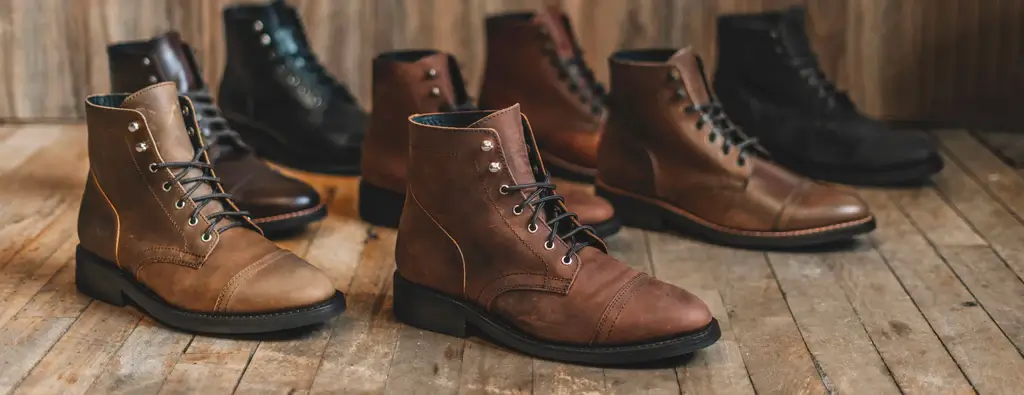 Flat Cord vs. Round Cord
Flat Cord vs. Round Cord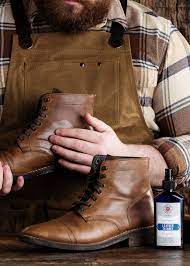 Round laces are easier to obtain and come in a wide variety of colors. However, they are a bit bulkier and tend to fray more easily.
Round laces are easier to obtain and come in a wide variety of colors. However, they are a bit bulkier and tend to fray more easily.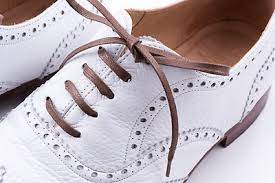 Combination Of Flat And Round Laces
Combination Of Flat And Round Laces